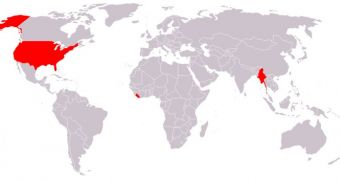Feet, yards, inches, miles, gallons, ounces, these may mean something to some people around the world, while others struggle with online converters or, worse, software designed to convert these values, that are not reliable most of the times.
How about fathoms, rods, chains, furlongs, leagues?Did anybody hear about these strange measuring units? The US is a powerful nation, a "model of democracy" and an economic standard that most countries would like to follow.
While English has gradually imposed itself as the most used language in many fields, starting with the IT, there is one thing not many people wanted to adopt: their measuring system.
Of course, they're not the only country to stick to the old system, but while some countries still use feet and miles, although they officially adopted the International System of Units, the US are among the only three countries that never adopted this system, the other two being Liberia and Myanmar.
Since the 1960s, the International System of Units (SI) ("Syst?me International d'Unit?s" in French, hence "SI") has been the internationally recognized standard metric system. Metric units of mass, length, and electricity are widely used around the world for both everyday and scientific purposes.
They have been designed to provide a single unit for any physical quantity, thus eliminating the need for conversion factors when making calculations with physical quantities. Another advantage of the unified metric system is the fact that multiples and submultiples are related to the fundamental unit by factors of powers of ten, so that one can convert by simply moving the decimal place: 1.234 meters is 1234 millimeters, 0.001234 kilometers etc.
I can tell you that in a scientific paper the effort of converting the measuring units from the international system to the one used in the US can give you serious headaches and are sometimes as complicated as the mathematical calculations in the first place.
If you don't believe me, just try these experiments. Transforming the following values from one measuring system to the other can make you scream, and not Eureka!
Just a few examples: what is the mileage of a car that uses 8,7 liters of fuel per one hundred kilometres? What is a pressure value of 174 pounds per square inch transformed to kilograms per square meter? How much is a density of 1,6 grams per cubic centimeter transformed to pounds per cubic foot?
This is one thing I'll never understand. No wait, there's also the thing with the spelling differences and synonyms from British to US English... What should I wear, a pair of green trousers or one of kaki pants?

 14 DAY TRIAL //
14 DAY TRIAL //